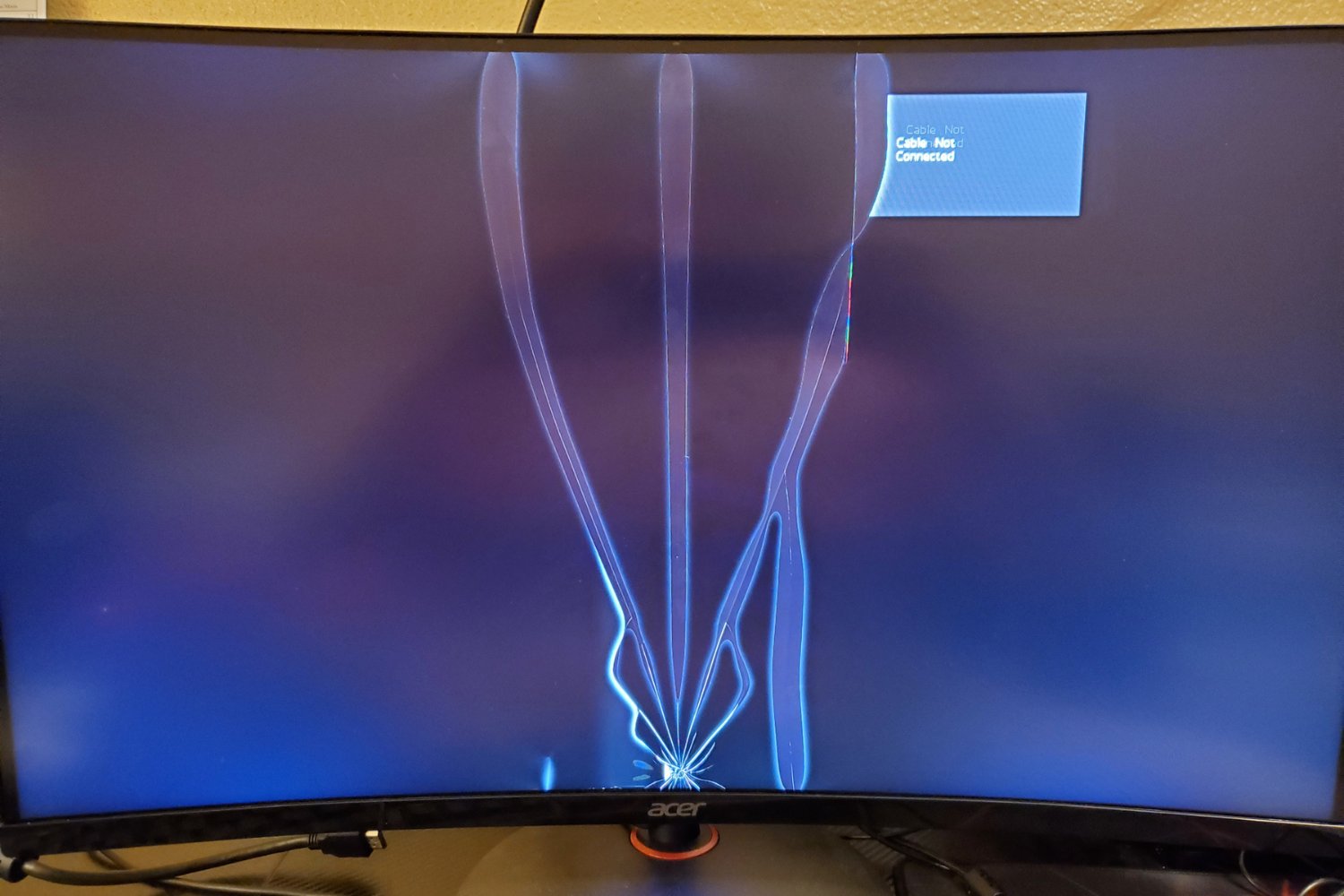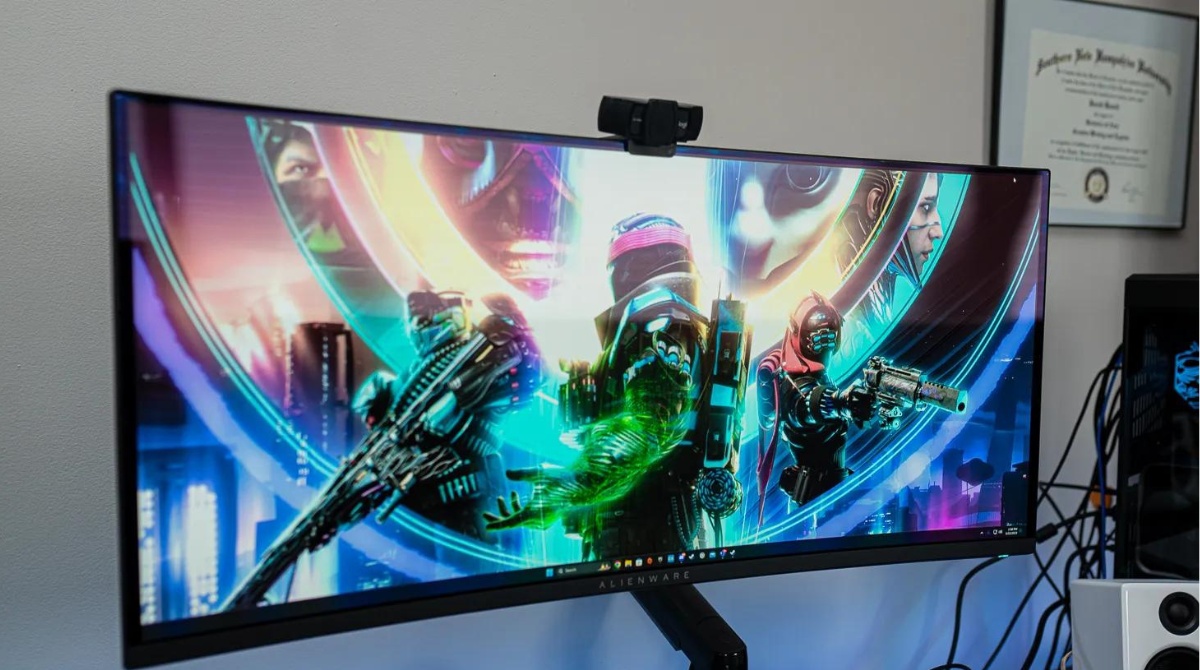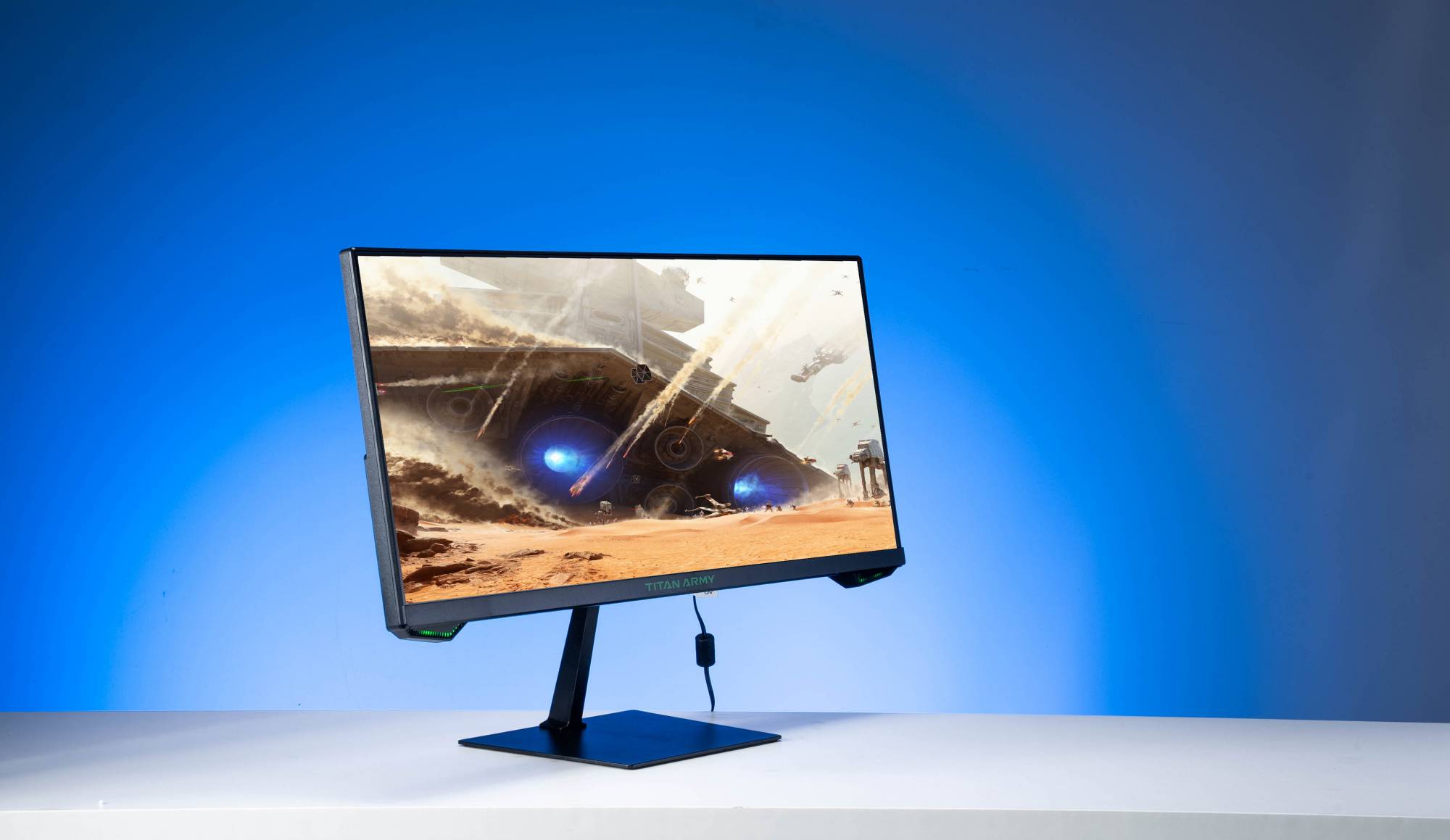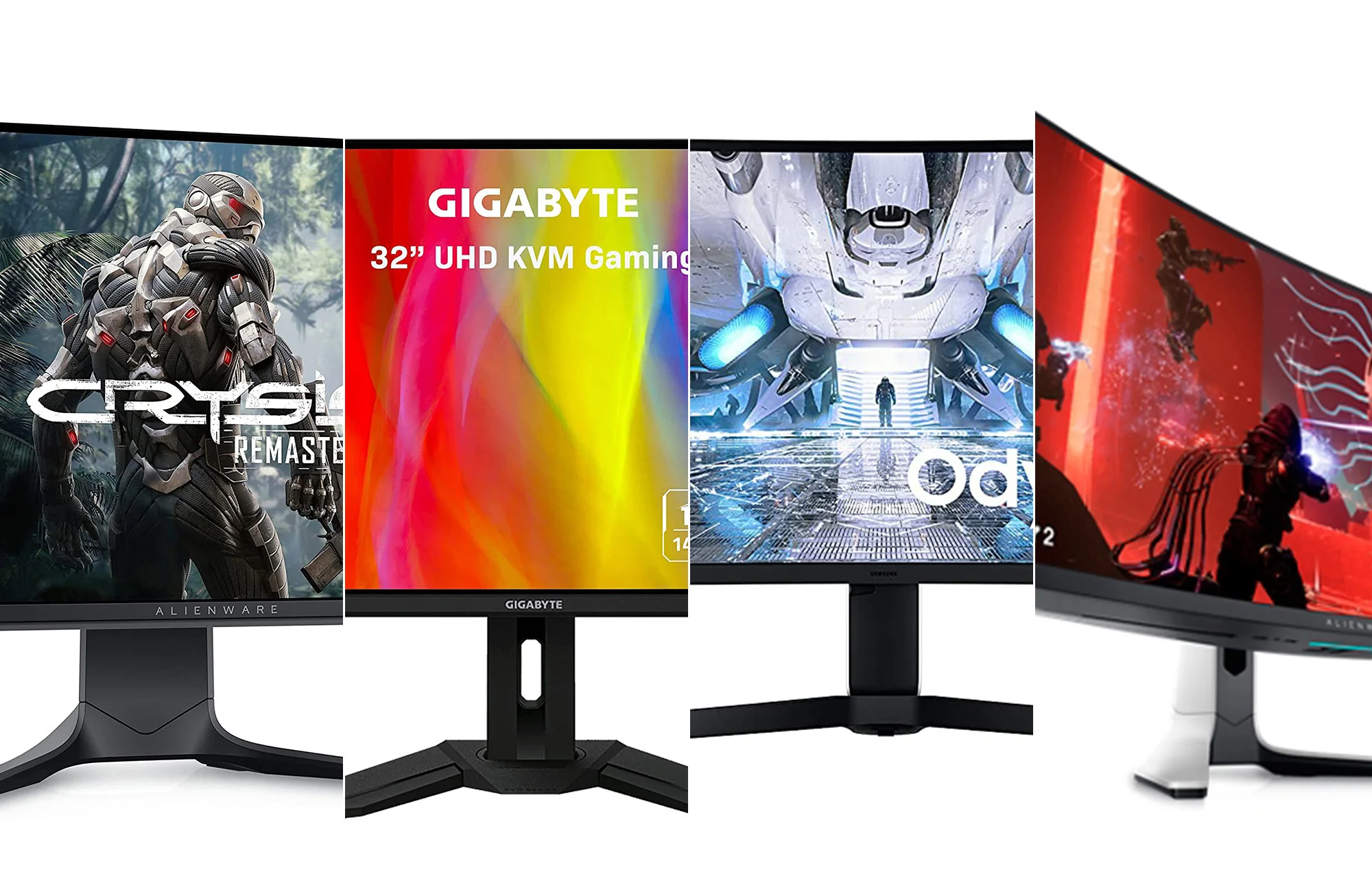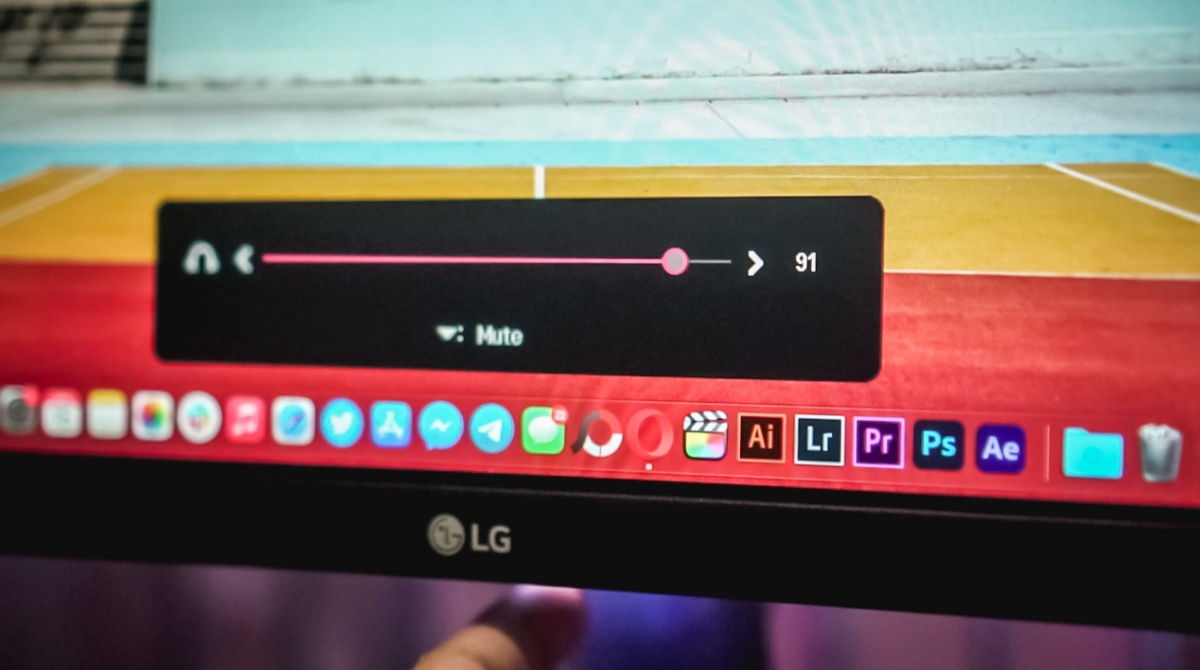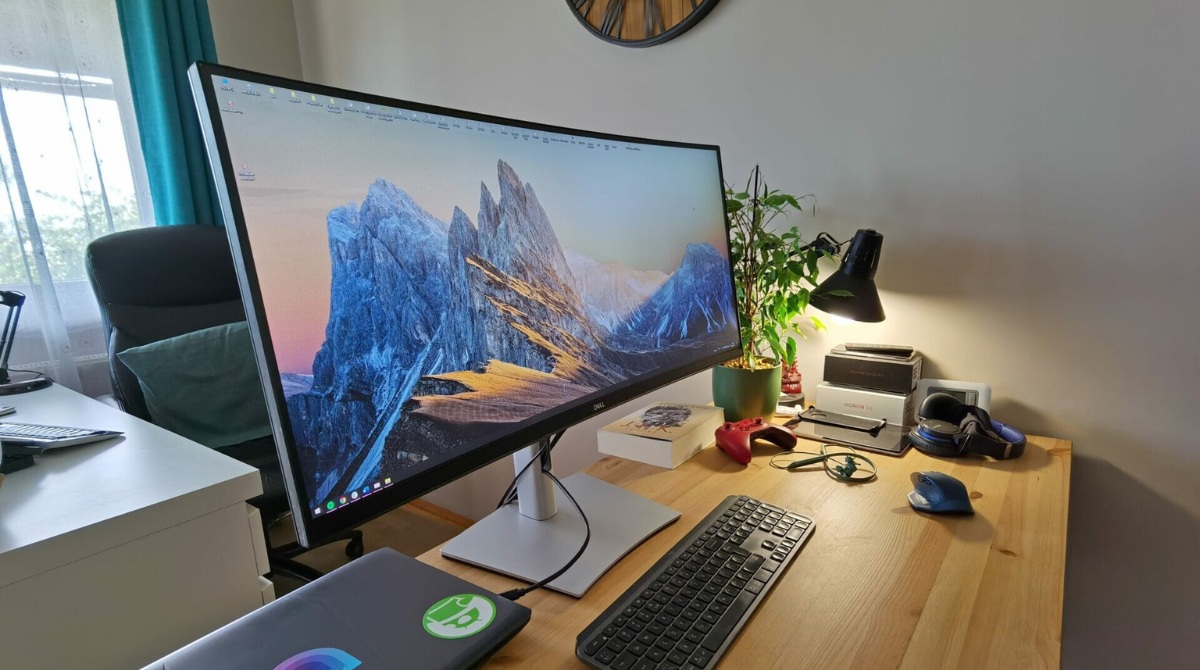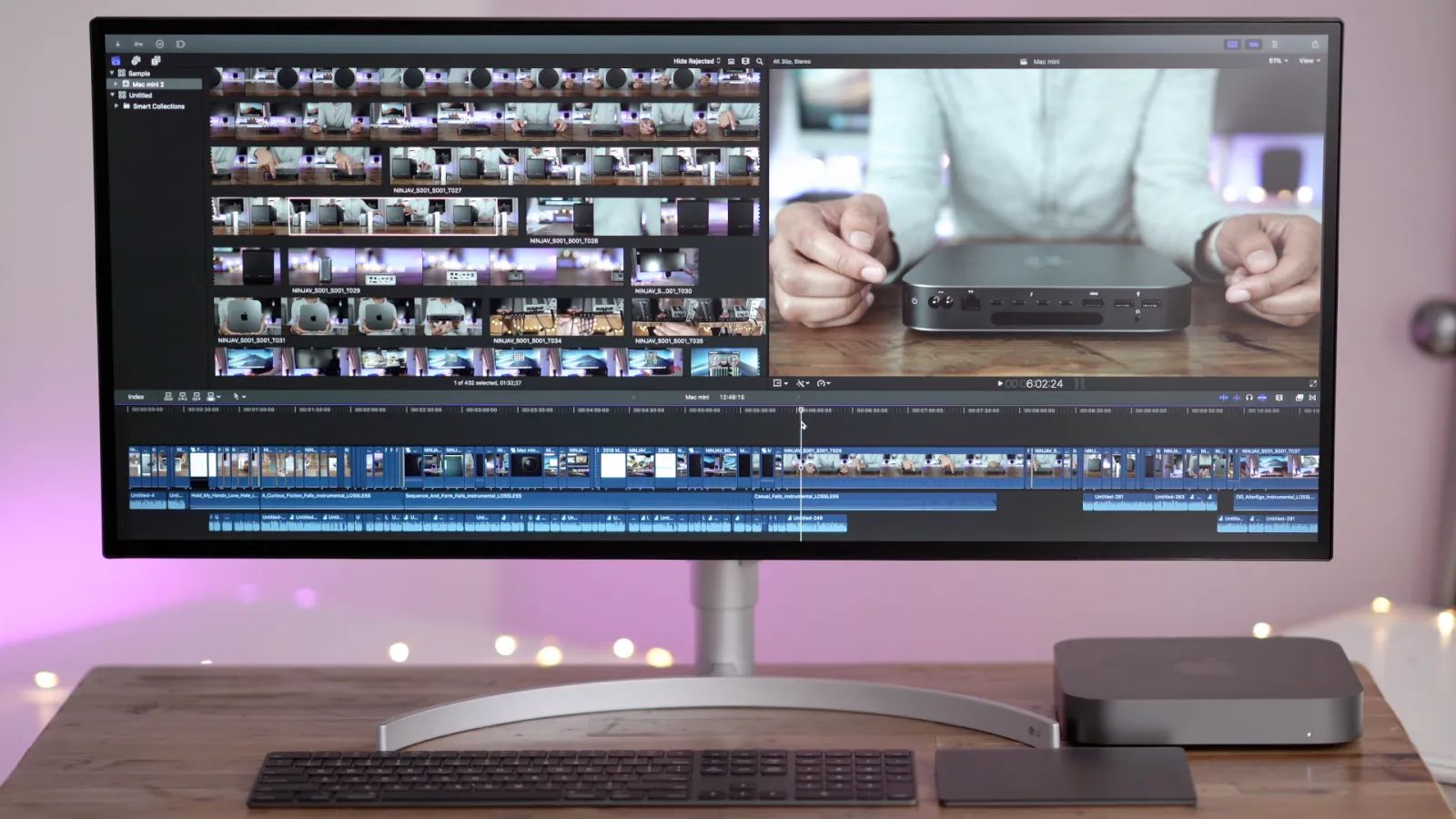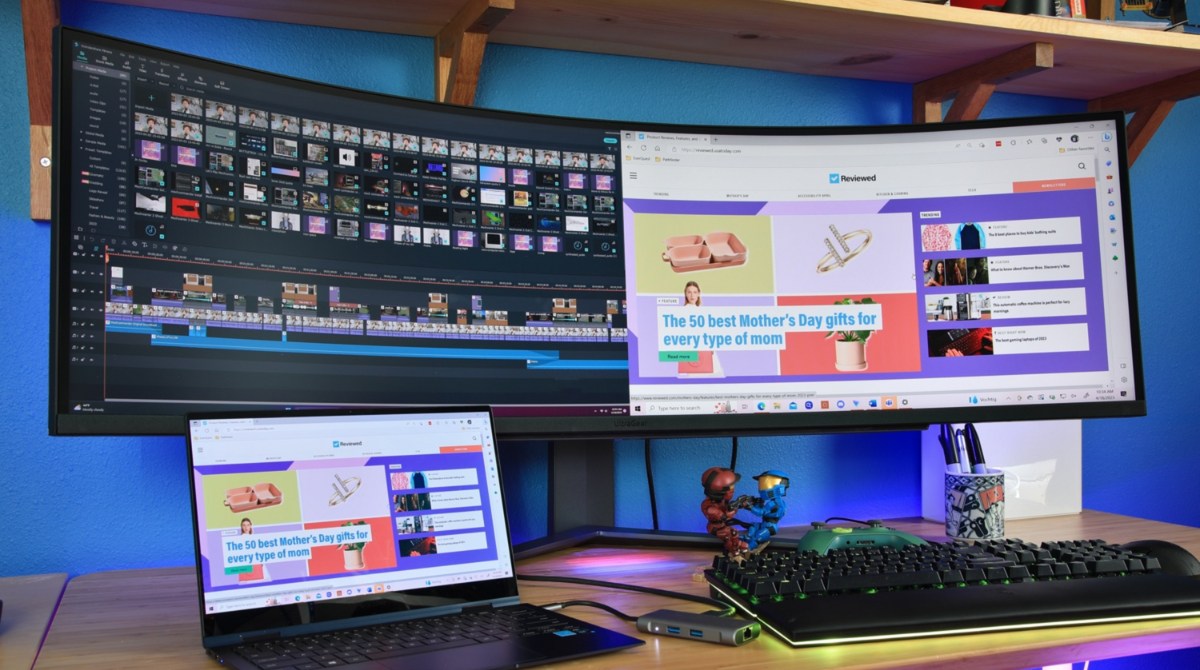Common Issues with Ultrawide Monitors
Ultrawide monitors have become increasingly popular due to their immersive viewing experience and enhanced productivity. However, like any electronic device, they are not immune to issues and malfunctions. Understanding the common problems that can occur with ultrawide monitors can help you address them promptly and ensure their optimal performance.
One of the most prevalent issues with ultrawide monitors is screen flickering. This can be caused by a variety of factors, including outdated graphics drivers, incompatible display settings, or a faulty screen backlight. Another common problem is dead pixels, which are pixel defects that manifest as tiny black or colored dots on the screen. These can be extremely distracting and affect the overall visual quality.
Another issue that users may encounter is image ghosting or blurring. This occurs when there is a delay in pixel transition, resulting in a laggy or blurry image, particularly during fast-moving scenes. Connectivity problems can also arise with ultrawide monitors, such as the monitor not being recognized by the computer or difficulty in connecting multiple devices.
Additionally, ultrawide monitors can experience issues with color accuracy and calibration. This can lead to inaccurate color representation, making it challenging for graphic designers, photographers, and other professionals who require precise color reproduction.
Furthermore, backlight bleeding is a common problem. It refers to the uneven distribution of light on the screen, resulting in brighter areas around the edges or corners. This can detract from the viewing experience, especially when watching movies or playing games with dark scenes.
Lastly, ultrawide monitors are susceptible to physical damage, such as cracked screens or bent frames, which can occur due to accidental impacts or mishandling during transportation.
It is important to note that not all ultrawide monitors will experience these issues, and some models may be more resilient than others. However, being aware of these common problems can help you identify them early on and seek the necessary repairs or solutions.
Factors that Affect Repair Costs
When it comes to repairing an ultrawide monitor, the cost can vary depending on several factors. Understanding these factors can help you estimate the potential expenses and make informed decisions about whether to repair or replace your monitor.
The first factor that affects repair costs is the type and severity of the issue. Minor problems like loose cables or software glitches can often be resolved with minimal expense. However, more complex issues such as a faulty display panel, a damaged backlight, or a malfunctioning circuit board may require more extensive repairs and incur higher costs.
The second factor to consider is the age and warranty status of your ultrawide monitor. If your monitor is still under warranty, the repair costs may be covered by the manufacturer, saving you a significant amount of money. However, if your warranty has expired or does not cover the specific issue, you will likely have to bear the full cost of the repairs.
The availability and cost of replacement parts is another factor that can impact repair costs. If the required parts are readily available and affordable, the overall repair expenses may be lower. However, if the parts are rare, discontinued, or expensive, it can significantly drive up the repair costs.
The skill and expertise of the repair technician also play a role in determining the cost. If you opt for professional repair services, the rates may vary depending on the technician’s experience, reputation, and location. Additionally, the complexity of the repair job may influence the labor charges.
Lastly, the cost of repairs can also be influenced by geographical factors and market trends. Repair costs can vary in different regions based on factors such as the cost of living, local competition, and supply and demand dynamics. It’s a good idea to research local repair shops and compare prices to find the most cost-effective option.
It’s important to note that repair costs can sometimes approach or even exceed the price of a new ultrawide monitor. In such cases, it may be more economical to consider purchasing a replacement rather than spending a significant amount on repairs.
In summary, several factors can affect the repair costs of an ultrawide monitor, including the type and severity of the issue, warranty coverage, availability and cost of replacement parts, repair technician fees, and geographical factors. Considering these factors can help you assess the potential expenses and make an informed decision regarding the repair or replacement of your ultrawide monitor.
DIY Troubleshooting and Repair
Before diving into professional repair services, it’s worth exploring some do-it-yourself (DIY) troubleshooting and repair options for your ultrawide monitor. While DIY methods may not be suitable for complex issues, they can help resolve minor problems and potentially save you time and money.
One of the first steps in DIY troubleshooting is to check the connections and cables. Ensure that all cables, including power and display cables, are securely connected to the monitor and the computer. Sometimes, loose or faulty cables can cause display issues or connectivity problems.
If you are experiencing screen flickering or image ghosting, updating your graphics drivers can often help. Visit the manufacturer’s website and download the latest drivers for your graphics card. Installing the updated drivers can resolve many display-related issues.
Additionally, adjusting the display settings on your computer can improve the visual quality and fix certain problems. Experiment with the refresh rate, resolution, and color calibration settings to find the optimal configuration for your ultrawide monitor.
If you suspect dead pixels on the screen, there are online tools and software available that can help identify and sometimes even fix these pixel defects. Keep in mind that these DIY methods may not always yield perfect results, but they can significantly reduce the visibility of dead pixels.
For physical damage, such as cracked screens or bent frames, DIY repair may not be feasible. In these cases, it is advisable to seek professional help to avoid causing further damage or compromising the functionality of your ultrawide monitor.
When attempting DIY troubleshooting or repair, it is essential to follow online tutorials or guides specific to your monitor model and exercise caution. If you are uncomfortable or unfamiliar with the process, it may be best to seek professional assistance to avoid exacerbating the issue.
Overall, DIY troubleshooting and repair can be a cost-effective approach for certain minor issues with your ultrawide monitor. However, it is important to assess your own skill level and comfort with the process before attempting any repairs. If in doubt, consult a professional technician or consider seeking professional repair services.
The Cost of Parts for Ultrawide Monitors
When it comes to repairing an ultrawide monitor, one of the significant factors in determining the overall cost is the price of the replacement parts. The cost of parts can vary depending on factors such as the brand, model, availability, and rarity of the components required for the repair.
For common and easily replaceable parts, such as cables or power adapters, the cost is generally relatively affordable. These parts are readily available from various online retailers or even directly from the manufacturer. However, keep in mind that prices can still vary depending on the brand and quality of the replacement parts.
On the other hand, more complex and specialized components, such as display panels, backlight assemblies, or circuit boards, tend to be more expensive. These parts often require specific technological specifications and are designed specifically for particular monitor models. As a result, their availability may be limited, and they may come at a higher price point.
In some cases, replacement parts for older or discontinued ultrawide monitor models can be harder to find, increasing the cost further. Limited availability can drive up the prices in the secondary market or from specialized suppliers, adding to the overall repair expense.
It is worth mentioning that the cost of parts can also vary depending on where you purchase them from. While buying directly from the monitor manufacturer may guarantee authenticity and compatibility, it can also come with a higher price tag. Exploring alternative options such as authorized resellers or reputable third-party sellers can sometimes help find more affordable alternatives.
When estimating the cost of parts, it is essential to factor in shipping or handling fees, particularly if you are purchasing from an online retailer. These additional expenses can contribute to the overall cost of the parts and should be taken into consideration when budgeting for repairs.
Lastly, it’s crucial to consider the warranty coverage of your ultrawide monitor. If your device is still under warranty, the replacement parts may be covered, and you may not incur any additional costs for the repair. Warranty terms and conditions vary between manufacturers, so it’s advisable to review your warranty documentation or contact customer support to understand what is covered.
In summary, the cost of parts for ultrawide monitors can vary depending on factors such as the brand, model, availability, and rarity of the components. While some parts may be readily available and affordable, more complex or specialized components can be expensive and harder to find. Considering warranty coverage and exploring alternative purchasing options can help mitigate the cost of parts for your ultrawide monitor repair.
Repair Costs for Common Ultrawide Monitor Problems
The cost of repairing an ultrawide monitor can vary depending on the specific issue you are facing. Here are the estimated repair costs for some common problems encountered with ultrawide monitors:
- Screen flickering: The cost to repair screen flickering can range from $50 to $200. It largely depends on the underlying cause, such as a loose connection, outdated drivers, or a faulty backlight.
- Dead pixels: Repairing dead pixels can be a bit more challenging and costly. If the monitor is still under warranty, the manufacturer may replace the display panel free of charge. However, out-of-warranty repairs can cost anywhere from $100 to $300 or more, depending on the size and number of dead pixels.
- Image ghosting: Repair costs for image ghosting issues vary depending on the root cause. If it’s a display setting or software-related problem, fixing it may be relatively inexpensive or even free. However, if it’s due to a faulty panel or circuitry, the repair expenses can range from $100 to $300.
- Connectivity problems: Repairing connectivity issues can involve troubleshooting the cables, ports, or even the graphics card. Depending on the complexity of the problem, repair costs can range from $50 to $150 or more.
- Color calibration issues: Addressing color accuracy and calibration problems may involve professional calibration tools and expertise. This can increase the cost of repair, typically ranging from $100 to $300, depending on the extent of the calibration required.
- Backlight bleeding: Fixing backlight bleeding issues can be challenging, as it often requires replacing the display panel or adjusting the screen’s housing. Repair costs can range from $100 to $300 or more, depending on the severity of the bleeding and the monitor model.
It’s important to note that these estimates are rough ranges and can vary based on factors such as the model of your ultrawide monitor, the repair service you choose, and geographical location. Additionally, prices may fluctuate over time due to market conditions and availability of replacement parts.
Before undergoing any repairs, it’s recommended to obtain a detailed quote from a reputable repair service to get a more accurate assessment of the costs associated with your particular issue.
Warranty Coverage for Ultrawide Monitors
When purchasing an ultrawide monitor, it’s important to understand the warranty coverage provided by the manufacturer. Warranty terms can vary among different brands and models, so it’s crucial to review the specific warranty documentation or contact customer support for detailed information. Warranty coverage can greatly impact the cost of repairs and save you from incurring additional expenses.
Most ultrawide monitors come with a standard manufacturer’s warranty that typically lasts for one to three years. During this warranty period, the manufacturer will cover the cost of repairs for any defects or malfunctions that are the result of a manufacturing issue.
The warranty coverage usually includes the cost of parts and labor required to fix the problem. If your monitor experiences any of the covered issues within the warranty period, the manufacturer will repair or replace the device free of charge. In some cases, they may even offer a refund or store credit if the issue cannot be resolved.
It’s important to note that warranty coverage may not extend to certain types of damage, such as accidents, mishandling, or modifications made to the monitor. These types of damages are typically classified as user-induced and are not covered under the manufacturer’s warranty.
Some manufacturers offer extended warranty options for an additional fee. These extended warranties can prolong the coverage period beyond the standard warranty, providing you with peace of mind for a longer duration. They may also offer additional benefits such as expedited repair services or priority customer support.
When requesting warranty service, you may be required to provide proof of purchase, such as a receipt or invoice, to validate your eligibility for the warranty coverage. It’s essential to retain these documents in a safe place to facilitate the warranty claim process.
It’s worth mentioning that warranty coverage can vary geographically, and certain manufacturers may offer different warranty terms and conditions in different regions. Hence, it’s advisable to confirm the warranty details specific to your location to avoid any confusion or misunderstandings.
If your ultrawide monitor experiences an issue and falls outside the warranty period, or if the problem is not covered under the warranty, you will likely have to bear the cost of repairs yourself. In such cases, it’s recommended to weigh the repair costs against the value of the monitor and consider whether it’s more economical to repair or replace the device.
In summary, understanding the warranty coverage of your ultrawide monitor is essential in assessing the cost of repairs. Manufacturer’s warranties typically cover defects or malfunctions within a specified period, excluding user-induced damages. Extended warranty options may also be available for extended coverage. It’s advisable to review the warranty documentation or contact customer support to fully understand your warranty coverage.
Is it Worth Repairing an Ultrawide Monitor?
When faced with a malfunctioning or damaged ultrawide monitor, the question arises as to whether it’s worth repairing or if it’s more practical to replace the device altogether. Several factors should be considered to help determine if repair is a viable option.
Firstly, it is essential to evaluate the extent of the issue and the associated repair costs. Minor issues such as loose cables, software glitches, or minor display imperfections may be relatively inexpensive and straightforward to repair. In such cases, repairing the monitor can be a cost-effective solution, particularly if the overall repair costs are significantly lower than the price of a new ultrawide monitor.
Another factor to consider is the age and usage of your current monitor. If your ultrawide monitor is relatively new and still within a warranty period, it may be advantageous to pursue repairs. Warranty coverage can save you from incurring additional expenses as long as the issue falls within the warranty terms.
However, if your ultrawide monitor is significantly older and no longer covered by warranty, repair costs may be higher due to the potential scarcity of replacement parts or labor fees. In such cases, it may be more practical to invest in a new monitor that offers the latest features and technologies instead of spending a substantial amount on repairs.
Additionally, it is important to assess the overall value and functionality of your ultrawide monitor. Ultrawide monitors are known for their immersive viewing experience and enhanced productivity. If your current monitor meets your needs and provides the features and performance you require, it may be worth considering repairs to extend its lifespan.
On the other hand, if your monitor is already outdated or no longer meets your needs in terms of resolution, refresh rate, or connectivity options, investing in a new ultrawide monitor may be a better long-term solution. Newer models often offer improved technologies, better color reproduction, and enhanced compatibility with modern devices.
Lastly, personal preferences and budget also play a role in the decision-making process. Some individuals may have a sentimental attachment to their ultrawide monitor or prefer the familiarity of their current setup. In such cases, the decision to repair or replace the monitor may lean more towards repairs, even if the cost is relatively higher.
In summary, whether it is worth repairing an ultrawide monitor depends on several factors, including the extent of the issue, repair costs compared to the price of a new monitor, age and warranty status, functionality and value of the current monitor, personal preferences, and budget. It is recommended to evaluate these factors and consider the long-term benefits before making a decision.
Where to Get Ultrawide Monitors Repaired
When your ultrawide monitor requires professional repair, you have several options for where to get it repaired. Here are some common places to consider:
Manufacturer’s authorized service centers: One of the most reliable options is to take your ultrawide monitor to an authorized service center operated by the manufacturer. These centers are equipped with specialized knowledge, genuine replacement parts, and the expertise to handle repairs specific to your monitor model. While this option may be more expensive than other alternatives, it ensures that your monitor is repaired by experts with the necessary skills.
Third-party repair shops: There are numerous third-party repair shops that specialize in electronic repairs, including monitors. These shops often offer competitive pricing and fast turnaround times. However, it’s crucial to choose a reputable and experienced repair shop to ensure quality service and genuine replacement parts. You can ask for recommendations from friends or family or conduct online research to find reliable repair shops in your area.
Online repair services: With the advent of technology, some companies now offer online repair services for ultrawide monitors. These services typically involve shipping your monitor to the company’s facility for diagnosis and repair. While this option offers convenience, it’s important to research the online service provider thoroughly to ensure they have a reliable track record, positive customer reviews, and secure shipping methods to protect your monitor.
Local computer stores: Many local computer stores offer repair services for a wide range of electronic devices, including ultrawide monitors. These stores often have knowledgeable technicians who can diagnose and repair common monitor issues. While the expertise can vary among different stores, local computer stores can provide a convenient and potentially cost-effective option for repairing your ultrawide monitor.
DIY repair: If you possess technical skills and feel comfortable handling electronic repairs, you can attempt to repair your ultrawide monitor yourself. However, keep in mind that DIY repairs can be risky and may void any existing warranties. Make sure to follow detailed guides or tutorials specific to your monitor model and exercise caution during the repair process.
Whichever option you choose, it’s important to communicate with the repair service or technician before proceeding. Discuss the specific issue with your ultrawide monitor, inquire about the estimated repair costs, turnaround time, any warranty coverage, and ask about any guarantees on the repair work.
In summary, you have several options for getting your ultrawide monitor repaired, including manufacturer’s authorized service centers, third-party repair shops, online repair services, local computer stores, or attempting a DIY repair. It is important to choose a reliable and reputable option that suits your needs and budget, ensuring that your ultrawide monitor is repaired by skilled technicians and using genuine replacement parts.
Tips for Saving Money on Ultrawide Monitor Repairs
Ultrawide monitor repairs can sometimes be costly, but there are several ways you can save money on the repair process. Here are some tips to help you keep the expenses down:
Check warranty coverage: Before seeking any repairs, review your ultrawide monitor’s warranty documentation or contact customer support to determine if the issue is covered. If your monitor is still under warranty, the manufacturer may repair it free of charge or at a reduced cost.
Compare repair estimates: Reach out to different repair service providers and ask for detailed estimates. Compare the prices, repair procedures, and warranties offered by each provider. This helps you find the most cost-effective option without compromising quality.
Consider DIY troubleshooting: Before paying for professional repairs, attempt to troubleshoot the issue yourself. Online tutorials or forums may provide valuable guidance for fixing common problems. Be cautious and only tackle repairs that you are confident in performing. This can save you money on labor costs.
Explore local computer stores: Local computer stores often offer competitive rates for repair services. Visit multiple stores in your area and compare their prices and expertise. In some cases, local stores can provide quality repairs at lower prices compared to larger repair chains.
Seek refurbished parts: If your monitor requires replacement parts, consider purchasing refurbished components instead of brand new ones. Refurbished parts are typically less expensive and can still offer reliable performance. Ensure the parts are from reputable sources and come with a warranty or guarantee.
Ask for a warranty on repairs: When selecting a repair service, inquire about any warranties they offer on the repair work. A warranty can provide you with peace of mind knowing that if the problem persists shortly after the repair, you can have it fixed again at no additional cost.
Consider self-repair for minor issues: For simple repairs like loose cables or software-related problems, consider fixing them yourself if you have the necessary tools and expertise. This eliminates the need to pay for professional labor and can save you money.
Maintain regular cleaning and maintenance: Take proper care of your ultrawide monitor by regularly cleaning the screen and ensuring proper ventilation. Dust and debris buildup can lead to overheating and other issues. By maintaining your monitor’s cleanliness, you can potentially avoid costly repairs in the first place.
Research replacement options: If the repair costs are nearing the price of a new monitor, it may be more economical to invest in a replacement instead. Compare the repair estimates with the prices of new ultrawide monitors to determine the most cost-effective choice.
By implementing these money-saving tips, you can potentially reduce the cost of repairing your ultrawide monitor without compromising on quality and performance. Remember to carefully consider your options and make an informed decision based on the nature of the issue and your budget.
Final Thoughts on the Cost of Repairing Ultrawide Monitors
Repairing an ultrawide monitor can be a significant investment, and the cost can vary depending on several factors. It’s important to carefully consider these factors and weigh the expenses against the value and functionality of your monitor.
Before opting for repairs, evaluate the severity of the issue and compare the repair costs with the price of a new ultrawide monitor. If the cost of repairs approaches or exceeds the price of a new monitor, it may be more practical to invest in a replacement instead.
Additionally, take into account the age and warranty status of your monitor. If your monitor is still covered by warranty and the issue falls within the warranty terms, repairs may be completed at little to no cost to you.
Consider the availability and cost of replacement parts for your specific monitor model. Some parts may be readily available and affordable, while others can be rare or expensive, significantly impacting the repair costs.
Explore different repair options, such as manufacturer’s authorized service centers, third-party repair shops, or online repair services. Compare their prices, level of expertise, and warranty coverage to find the most cost-effective solution without compromising on quality.
DIY troubleshooting and minor repairs can be a cost-saving option for simple issues, but exercise caution and consider your own skill level before attempting repairs that may void warranties or cause further damage.
Lastly, prioritize regular maintenance and proper care for your ultrawide monitor to minimize the risk of issues and potential repair costs. Clean the screen regularly, ensure proper ventilation, and avoid mishandling or accidental damage.
Ultimately, the decision to repair or replace your ultrawide monitor depends on the specific circumstances, including the severity of the issue, repair costs, warranty coverage, availability of replacement parts, and personal preferences. Take the time to assess these factors and make an informed decision that best suits your needs and budget.







